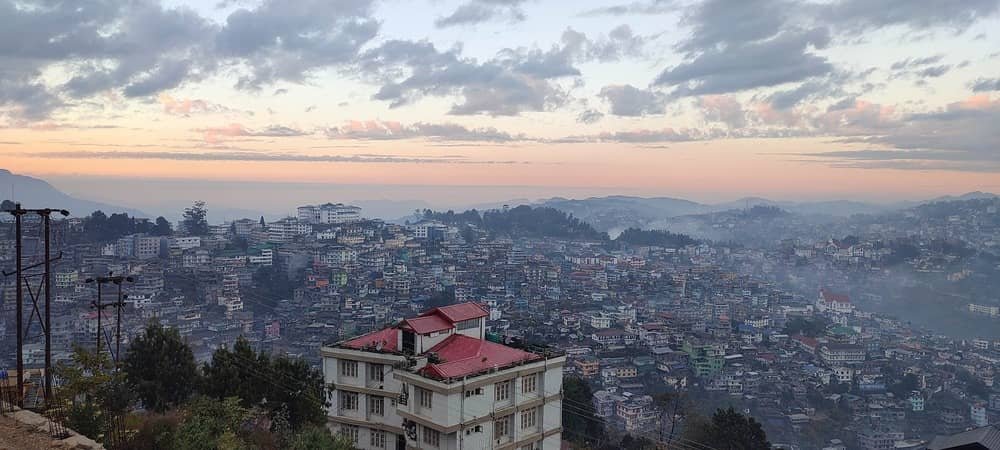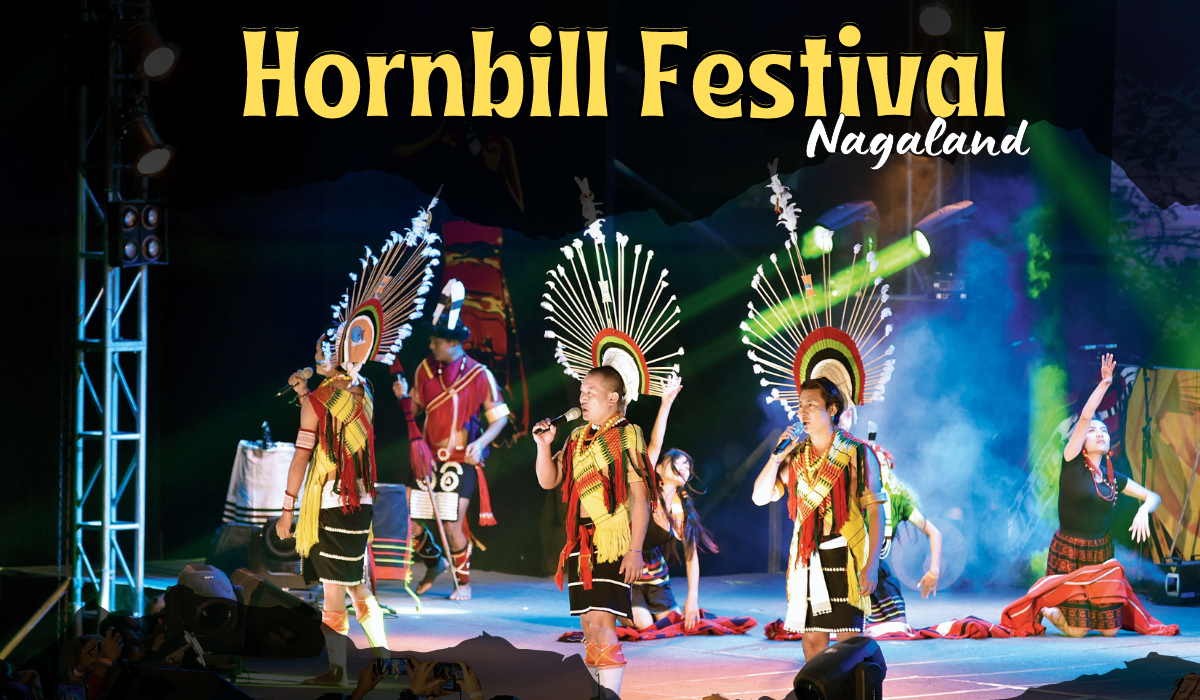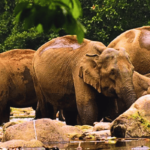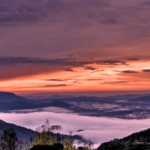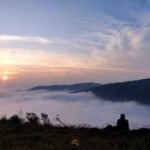Kohima is a captivating destination that combines natural beauty, rich tribal culture, and historical significance. Set amidst the lush hills of Northeast India, With its friendly locals, serene botanical garden, and a harmonious blend of tradition and modernity, Kohima invites travelers to immerse themselves in the unique culture and natural beauty of Nagaland.
Table of Contents:
- How to Reach Kohima?
- What is the best time to visit Kohima?
- Top 10 places to visit in Kohima
- FAQ

How to Reach Kohima?
By Air: Nearest Airport: The nearest airport to Kohima is Dimapur Airport (DMU), which is located approximately 74 kilometers (about 46 miles) away from Kohima. Dimapur Airport is well-connected to major cities in India, including Kolkata and Guwahati.
From Dimapur to Kohima: After arriving at Dimapur Airport, you can hire a taxi or take a shared taxi (often referred to as “sumos” in the region) to travel to Kohima. The journey from Dimapur to Kohima by road can take around 2-3 hours, depending on road conditions.
By Train: Nearest Railway Station: The nearest major railway station to Kohima is Dimapur Railway Station, which is well-connected to several major cities in India, including Kolkata, Guwahati, and New Delhi.
From Dimapur to Kohima: Similar to the airport, after arriving at Dimapur Railway Station, you can hire a taxi or take a shared taxi to travel to Kohima. The road journey typically takes around 2-3 hours.
By Road: National Highway 2 (NH2): Kohima is well-connected by road. National Highway 2 (NH2) connects Kohima to Dimapur, which is the gateway to Nagaland. You can travel to Kohima by private car, bus, or taxi from Dimapur.
Bus Services: There are bus services, including government-operated and private buses, that ply between Dimapur and Kohima. These buses are a cost-effective option for reaching Kohima, but the journey may take several hours, depending on traffic and road conditions.
By Shared Taxi: Shared taxis, often called “sumos” or “taxis” in the region, are a common mode of transportation in Nagaland. You can find shared taxis at various transportation hubs, including Dimapur Airport and Dimapur Railway Station. They offer a convenient and relatively quick way to reach Kohima.
What is the best time to visit Kohima?
The best time to visit Kohima, the capital city of Nagaland, India, largely depends on your preferences and the type of experience you are seeking. Kohima experiences distinct seasons, and each season offers its own unique attractions:
Spring (March to May): Spring is considered one of the best times to visit Kohima. During this season, the weather is generally pleasant, with mild temperatures and blooming flowers. The Dzukou Lily, a rare and beautiful flower, blooms in the nearby Dzukou Valley during April and May, making it a popular trekking destination.
Summer (June to August): The summer months in Kohima can be warm and relatively humid, with occasional rainfall. While it’s not as popular as spring, summer can still be a good time to visit, especially if you enjoy lush green landscapes and want to experience Nagaland during a quieter season. Be prepared for occasional rain showers.
Monsoon (July to September): The monsoon season in Kohima brings heavy rainfall, which can lead to landslides and road disruptions. Travel during this time can be challenging, and some areas, including trekking trails, may be inaccessible. If you plan to visit Kohima during the monsoon season, be sure to check weather and road conditions in advance.
Autumn (October to November): Autumn is another popular time to visit Kohima. The weather becomes cooler and more comfortable, making it an excellent time for outdoor activities, sightseeing, and attending festivals. The famous Hornbill Festival usually takes place in December, and preparations for this event begin during the autumn months.
Winter (December to February): Winter in Kohima can be cold, with temperatures dropping considerably, especially at night. While winter is not the most popular tourist season, it can be a good time for those who prefer cooler weather and want to attend the Hornbill Festival, which typically runs from December 1st to 10th. The festival showcases the rich cultural heritage of Nagaland’s tribes.
Top 10 Places to Visit in Kohima:
- Kohima War Cemetery
- Kisama Heritage Village
- The Kohima State Museum
- Dzukou Valley
- Shilloi Lake
- The Catholic Cathedral
- The Kohima Zoo
- Japfu Peak
- The Kohima Local Market
- The Kohima Botanical Garden
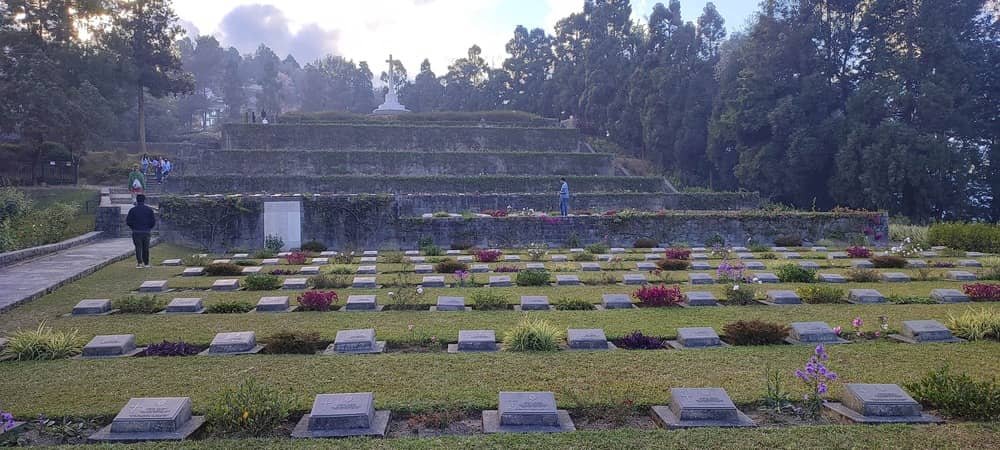
Kohima War Cemetery: The Kohima War Cemetery is typically within 1 to 2 kilometers (0.6 to 1.2 miles) of the central area of Kohima. The Kohima War Cemetery is famous for being a memorial and burial ground for soldiers who lost their lives during the Battle of Kohima, which took place during World War II. The Battle of Kohima, fought from April 4 to June 22, 1944, was a critical and brutal part of the larger Burma Campaign. It is often referred to as one of the fiercest battles of the war.
Kisama Heritage Village: Kisama Heritage Village is located very close to Kohima. The distance between Kohima and Kisama Heritage Village is approximately 10 to 12 kilometers (6 to 7.5 miles), and it typically takes around 20 to 30 minutes to reach the Village.
Kisama Heritage Village is renowned for being the venue of the annual Hornbill Festival, one of the most celebrated festivals in Nagaland and all of Northeast India. During the festival, various Naga tribes come together to showcase their unique cultures, traditions, dance, music, crafts, and cuisines.
The Kohima State Museum: The Kohima State Museum is conveniently located in the heart of Kohima, The museum features a wide range of exhibits that provide insights into the diverse traditions, art, culture, and history of the Naga people. Visitors can explore artifacts, artworks, traditional Naga attire, weaponry, jewelry, and more.
Dzukou Valley :Dzukou Valley is situated approximately 30 kilometers (18.6 miles) south of Kohima,One of the main attractions of Dzukou Valley is trekking. The valley offers several trekking trails, with the most popular one being the trek from Zakhama Village near Kohima. The trekking routes take you through lush forests, rolling hills, and along pristine streams.
Shilloi Lake : The distance between Shilloi Lake and Kohima is approximately 215 to 220 kilometers. The journey from Kohima to Shilloi Lake can take several hours due to the hilly and often challenging terrain in the region. This mystical lake is nestled amidst lush green hills and is believed to be sacred by the local Konyak Naga tribe. It’s a serene place to relax and enjoy nature. It’s important to note that Shilloi Lake is a remote and relatively less-visited destination, and access to the lake may require proper planning, permits, and guidance from local authorities or tour operators
The Catholic Cathedral: The Catholic Cathedral is located in the center of Kohima, It is a prominent religious and architectural landmark in the city. The cathedral represents part of the history of Christianity in Nagaland. It features a combination of traditional Naga and European architectural elements, creating a unique and aesthetically pleasing design.
The Kohima Zoo: The zoo is home to a diverse collection of animals and birds, many of which are native to Nagaland and other regions of Northeast India. Some of the species you can find at the zoo include the Himalayan bear, hoolock gibbon, sambar deer, barking deer, hornbills, and various other bird species.
Japfu Peak : Japfu Peak is located near the town of Kohima, it is renowned for its trekking trails. The most popular trek is the one that leads to the Japfu Peak summit. Trekkers often camp overnight on the slopes of Japfu Peak or in the Dzukou Valley, allowing them to fully immerse themselves in the serene natural surroundings and to witness breathtaking sunrises and sunsets. Visitors are typically required to obtain trekking permits from the Nagaland Tourism Department.
The Kohima Local Market: The Kohima Local Market is centrally located in Kohima, he market is known for its wide variety of products, including fresh produce, vegetables, fruits, and an array of traditional and exotic Naga ingredients. You can also find a range of local handicrafts, textiles, jewelry, and other souvenirs. It’s an excellent place to shop for Naga shawls, bamboo products, tribal jewelry, and traditional Naga attire.
The Kohima Botanical Garden: The Kohima Botanical Garden is situated on the outskirts of Kohima, he garden is home to a wide variety of indigenous and exotic plant species, including trees, shrubs, flowering plants, and medicinal plants. It provides a rich and diverse collection of flora from Nagaland and the Northeastern region of India. The garden provides viewpoints that offer scenic vistas of the surrounding hills and valleys, making it a delightful spot for photography and enjoying panoramic views.

Looking for Nagaland tour packages?
Muddie Trails provides a Nagaland tour package that covers hidden gems and major attractions of Nagaland. We create customized itineraries that provide flexibility for friends ,family members, and solo travelers to choose places. Contact us for more details.
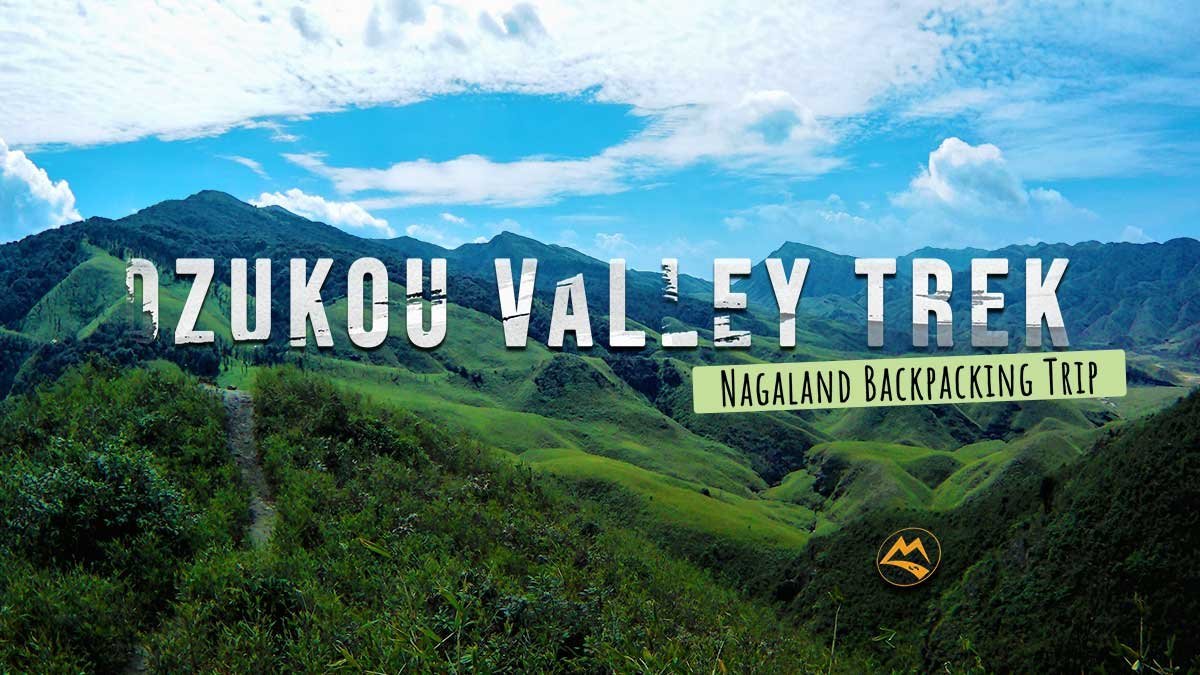
Nagaland Backpacking Trip With Dzukou Valley Trek (6D/5N)
The best time to visit Kohima is during the spring (March to May) and autumn (October to November) when the weather is pleasant, and various festivals and cultural events take place. Spring is ideal for trekking, while autumn features the famous Hornbill Festival.
Some of the must-visit attractions in Kohima include the Kohima War Cemetery, Dzukou Valley, Japfu Peak, Kohima State Museum, and the vibrant local markets where you can experience Naga culture and cuisine.
After arriving at Dimapur Airport, you can hire a taxi or take a shared taxi to travel to Kohima. The road journey takes approximately 2-3 hours, depending on road conditions.
Kohima offers trekking opportunities to places like Dzukou Valley and Japfu Peak. These treks provide stunning views of the natural beauty of Nagaland.
The Hornbill Festival is a major cultural event in Kohima, celebrating the rich traditions and customs of the Naga tribes. It provides an opportunity to witness traditional dances, music, cuisine, and handicrafts of the various Naga communities, making it a unique and vibrant cultural experience.
Yes, English is one of the official languages of Nagaland and is commonly spoken and understood in Kohima, making communication with locals relatively easy for English-speaking tourists.
Kohima is generally considered safe for tourists. However, it’s advisable to follow local guidelines and take necessary precautions while exploring the city and its surroundings.
Author - Shirky
Shirky is a passionate traveler, He keeps exploring the world and sharing his experiences through captivating storytelling. Through his leadership, Muddie Trails has become an advocate for responsible travel, leaving a positive impact on both the environment and the local communities.
Dandeli Tour Packages, Munnar Tour Packages, Gokarna Murudeshwar Honnavar Tour, Kodiakanal Tour Packages , Kotagiri and Conoor Tour Packages, Coorg Tour Packages, Ooty Tour packages, Wayand Tour Packages, Chikmagalur 2 days tour packages, Agumbe Tour Packages, Malvan Scuba Diving, Coorg Long Weekend Tour Packages, Mulki Kayaking Packages.
Sikkim Tour Packages(6D/5N), Nagaland Tour Packages with Dzukou Valley, Meghalaya Tour Packages(No Trekking), Hornbill Festival Tour With Dzukou Trek- Nagaland (6D/5N), Nagaland Backpacking Trip With Dzukou Valley Trek (6D/5N), Meghalaya Backpacking Trip(6D/5N), Tawang Backpacking Trip (7D/6N), Sikkim Backpacking Trip (6D/5N), Tawang Private Trip, Kaziranga National Park Safari (2D/2N),
